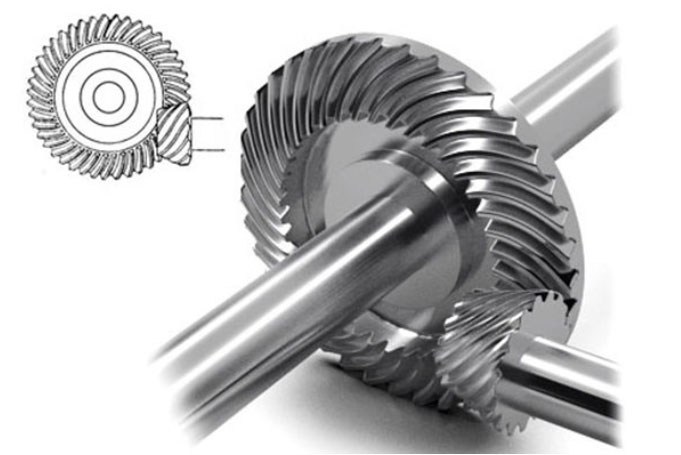Hypoid gears play a crucial role in automotive transmissions, contributing to the efficiency and performance of the overall drivetrain system. They are specifically designed to meet the demands of automotive applications, providing numerous advantages that enhance power transmission and optimize the vehicle’s performance. In this article, we will explore the role of hypoid gears in automotive transmissions, focusing on their efficiency and performance benefits.

- Torque Transmission and Power Distribution: Hypoid gears are commonly used in automotive differentials, which are responsible for distributing torque between the wheels. The offset shaft alignment of hypoid gears allows them to transmit torque efficiently, even when the drive shaft and driven wheels are not collinear. This enables power distribution to the wheels, facilitating smooth turns and effective handling.
- Increased Torque Capacity: Automotive transmissions require gears that can handle high torque levels generated by the engine. Hypoid gears offer excellent torque capacity due to their robust design and large contact area between the gear teeth. This allows them to withstand the high torque loads experienced in automotive applications, ensuring reliable power transmission without gear failure.
- Mechanical Efficiency: Efficiency is a critical factor in automotive transmissions to minimize power loss and maximize fuel efficiency. Hypoid gears exhibit high mechanical efficiency, primarily due to their tooth geometry and optimized contact patterns. The curved tooth profile of hypoid gears ensures more tooth engagement, resulting in improved power transfer and reduced frictional losses. This contributes to higher overall transmission efficiency and better fuel economy.
- Noise and Vibration Reduction: Automotive comfort is a key consideration, and reducing noise and vibration is essential for a smooth and enjoyable driving experience. Hypoid gears are known for their noise reduction characteristics compared to other gear types. The offset shaft alignment and curved tooth surfaces help distribute the load more evenly, reducing gear meshing noise and vibration. This results in quieter operation and improved comfort for vehicle occupants.
- Compact Design and Packaging: Modern automotive designs emphasize space efficiency, and hypoid gears offer advantages in this regard. Their compact design allows for more flexibility in packaging within the vehicle’s drivetrain system. Hypoid gears can be integrated into limited space areas, allowing for optimal placement of components and efficient use of available space.
- Durability and Reliability: Automotive transmissions are subjected to demanding conditions, including varying loads, shocks, and temperature fluctuations. Hypoid gears are designed to be robust and durable, capable of withstanding these harsh conditions. They are engineered with high-quality materials and precise manufacturing techniques to ensure longevity and reliability in automotive applications.
- Versatility in Transmission Configurations: Hypoid gears provide flexibility in transmission configurations, enabling the design of various transmission types such as front-wheel drive, rear-wheel drive, and all-wheel drive systems. Their offset shaft alignment allows for efficient power transfer between different axles and wheels, contributing to the versatility and performance of automotive transmissions.
In summary, hypoid gears play a vital role in automotive transmissions, offering efficiency and performance benefits that optimize power transmission and enhance overall vehicle performance. Their ability to handle high torque, mechanical efficiency, noise reduction characteristics, compact design, and durability make them well-suited for the demanding requirements of automotive applications. As automotive technology continues to advance, hypoid gears will remain essential components in modern transmissions, contributing to improved efficiency, fuel economy, and driving comfort.
